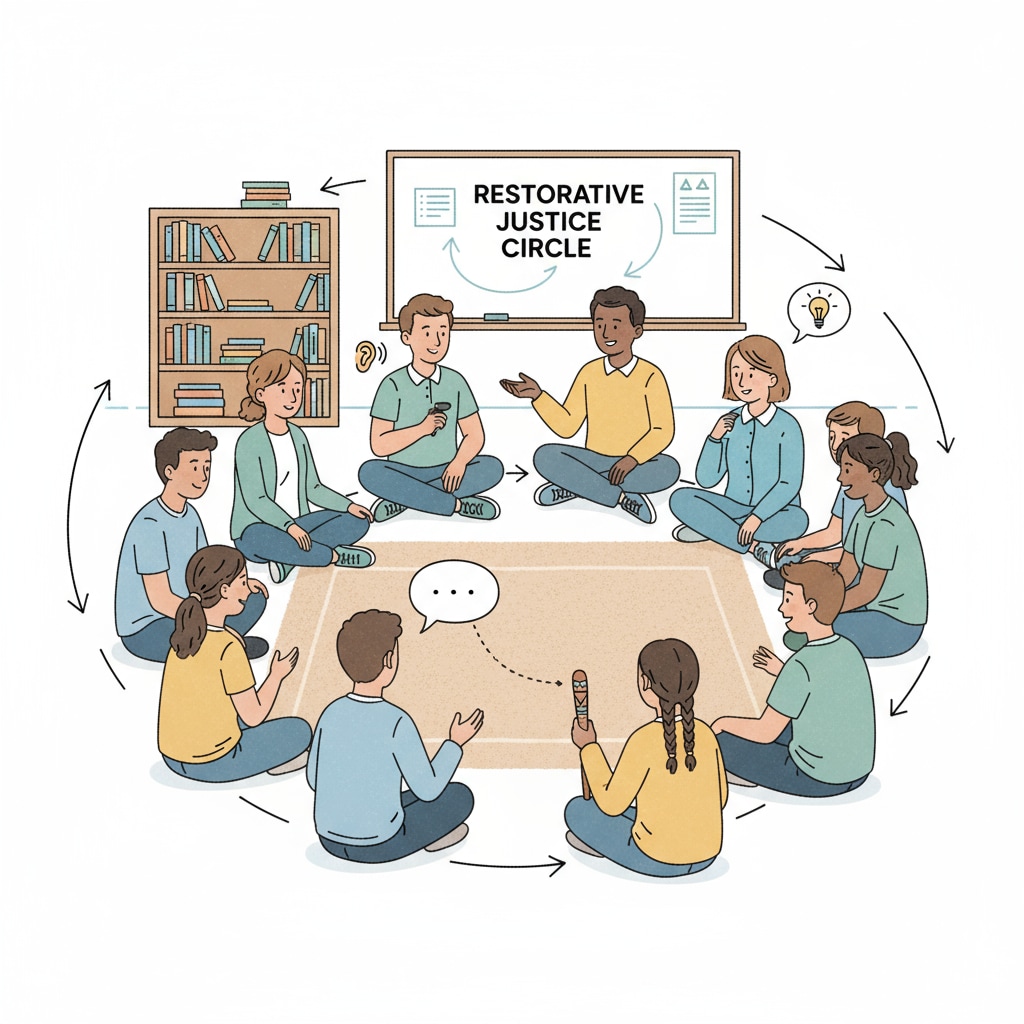Restorative justice, education resources, and school implementation are crucial aspects in transforming the educational environment, especially in large urban Title 1 schools. In K12 education, the concept of restorative justice has the potential to reshape the way schools handle conflicts and build a more harmonious community.

The Core Concepts of Restorative Justice
Restorative justice is centered around the idea of repairing harm and restoring relationships. Instead of focusing solely on punishment, it aims to involve all parties affected by an incident – the victim, the offender, and the community. For example, when a student bullies another, restorative justice would seek to understand the root causes, have the bully take responsibility, and find ways to repair the harm done to the victim and the school community. According to Wikipedia’s entry on restorative justice, it emphasizes dialogue, accountability, and healing. This approach can be a powerful tool in schools, promoting a sense of safety and mutual respect.
Essential Education Resources for Restorative Justice
In order to implement restorative justice effectively, schools need access to various resources. Training for educators is a fundamental requirement. Teachers and staff should be educated on the principles and practices of restorative justice. There are numerous online courses and workshops available, such as those offered by educational institutions and non-profit organizations. Additionally, materials like books, articles, and videos can provide valuable insights.

These resources can help educators understand how to facilitate restorative justice processes, such as circle meetings and restorative conversations. As a result, they can better guide students through conflict resolution and relationship building.
Implementation Strategies in Schools
Implementing restorative justice in schools requires a systematic approach. First, it’s important to establish a school-wide culture that values restorative practices. This can be achieved through assemblies, classroom discussions, and school policies that promote respect and accountability. For instance, creating a “restorative justice week” where students and staff engage in activities related to the concept. Second, integrating restorative justice into the curriculum can help students internalize its principles. Subjects like social studies and language arts can be used as platforms to teach about empathy, communication, and conflict resolution. As stated in Britannica’s article on restorative justice, involving the community is also crucial. Parent-teacher associations and local community groups can play a role in supporting restorative justice initiatives in schools.
In conclusion, restorative justice, education resources, and school implementation are intertwined elements that can bring about positive change in K12 education, especially in Title 1 schools. By understanding the core concepts, accessing the right resources, and implementing effective strategies, educators can create a more inclusive and harmonious school community.
Readability guidance: This article uses short paragraphs and lists to summarize key points. Each H2 section provides a clear focus. Passive voice and long sentences are kept to a minimum. Transition words are used throughout to enhance the flow of the article.


